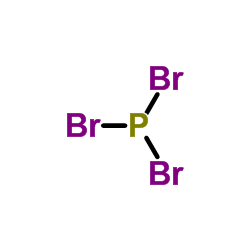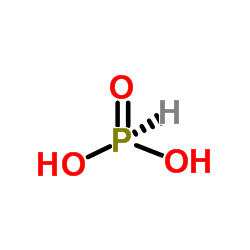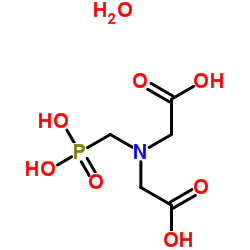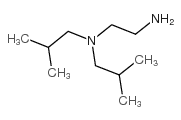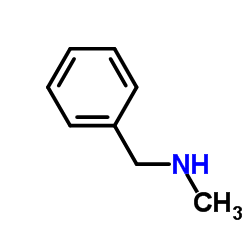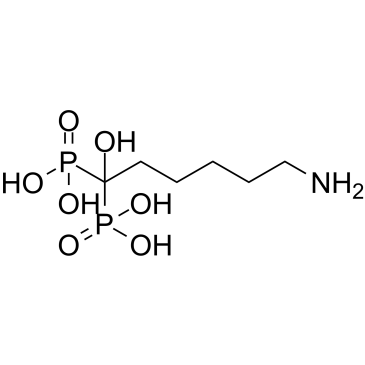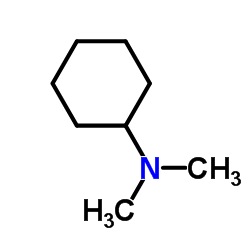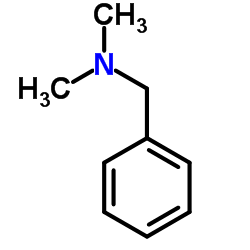10294-56-1
| 中文名 | 亚磷酸 |
|---|---|
| 英文名 | phosphorous acid |
| 英文别名 |
hydrophosphorous acid
Phosphorous acid diesters of phosphorous acid Phosphorou acid |
| 分子式 | H3O3P |
|---|---|
| 分子量 | 81.99580 |
| 精确质量 | 81.98200 |
| PSA | 74.28000 |
Synonym:Phosphonic acid; Phosphorous acid Section 2 - COMPOSITION, INFORMATION ON INGREDIENTS
Risk Phrases: 22 35 Section 3 - HAZARDS IDENTIFICATION EMERGENCY OVERVIEW
Harmful if swallowed. Causes severe burns.Hygroscopic (absorbs moisture from the air).Air sensitive. Potential Health Effects Eye: Contact with liquid is corrosive to the eyes and causes severe burns. Skin: Contact with liquid is corrosive and causes severe burns and ulceration. May cause skin rash (in milder cases), and cold and clammy skin with cyanosis or pale color. Ingestion: Causes gastrointestinal tract burns. Inhalation: Irritation may lead to chemical pneumonitis and pulmonary edema. Causes severe irritation of upper respiratory tract with coughing, burns, breathing difficulty, and possible coma. Aspiration may lead to pulmonary edema. May cause systemic effects. Chronic: Effects may be delayed. Repeated contact may cause corneal damage. Section 4 - FIRST AID MEASURES Eyes: In case of contact, immediately flush eyes with plenty of water for at least 15 minutes. Get medical aid immediately. Skin: In case of contact, immediately flush skin with plenty of water for at least 15 minutes while removing contaminated clothing and shoes. Get medical aid immediately. Wash clothing before reuse. Ingestion: If swallowed, do NOT induce vomiting. Get medical aid immediately. If victim is fully conscious, give a cupful of water. Never give anything by mouth to an unconscious person. Inhalation: If inhaled, remove to fresh air. If not breathing, give artificial respiration. If breathing is difficult, give oxygen. Get medical aid. Notes to Physician: Section 5 - FIRE FIGHTING MEASURES General Information: As in any fire, wear a self-contained breathing apparatus in pressure-demand, MSHA/NIOSH (approved or equivalent), and full protective gear. During a fire, irritating and highly toxic gases may be generated by thermal decomposition or combustion. Use water spray to keep fire-exposed containers cool. Substance is noncombustible. Contact with metals may evolve flammable hydrogen gas. Extinguishing Media: For small fires, use water spray, dry chemical, carbon dioxide or chemical foam. Do NOT get water inside containers. For large fires, use dry chemical, carbon dioxide, alcohol-resistant foam, or water spray. Section 6 - ACCIDENTAL RELEASE MEASURES General Information: Use proper personal protective equipment as indicated in Section 8. Spills/Leaks: Vacuum or sweep up material and place into a suitable disposal container. Clean up spills immediately, observing precautions in the Protective Equipment section. Avoid generating dusty conditions. Cover with sand, dry lime or soda ash and place in a closed container for disposal. Provide ventilation. Section 7 - HANDLING and STORAGE Handling: Wash thoroughly after handling. Minimize dust generation and accumulation. Do not breathe dust, vapor, mist, or gas. Do not get in eyes, on skin, or on clothing. Keep container tightly closed. Use only in a chemical fume hood. Discard contaminated shoes. Storage: Store in a tightly closed container. Store in a cool, dry, well-ventilated area away from incompatible substances. Keep away from metals. Corrosives area. Do not store in metal containers. Section 8 - EXPOSURE CONTROLS, PERSONAL PROTECTION Engineering Controls: Facilities storing or utilizing this material should be equipped with an eyewash facility and a safety shower. Use adequate ventilation to keep airborne concentrations low. Exposure Limits CAS# 10294-56-1: CAS# 13598-36-2: Personal Protective Equipment Eyes: Wear chemical splash goggles. Skin: Wear appropriate protective gloves to prevent skin exposure. Clothing: Wear appropriate protective clothing to prevent skin exposure. Respirators: A respiratory protection program that meets OSHA's 29 CFR 1910.134 and ANSI Z88.2 requirements or European Standard EN 149 must be followed whenever workplace conditions warrant respirator use. Section 9 - PHYSICAL AND CHEMICAL PROPERTIES Physical State: Chunks Color: white Odor: Faint characteristic odor pH: Not available. Vapor Pressure: Not available. Viscosity: Not available. Boiling Point: 200 deg C @ 760 mm Hg Freezing/Melting Point: 73 deg C Autoignition Temperature: Not available. Flash Point: Not available. Explosion Limits, lower: Not available. Explosion Limits, upper: Not available. Decomposition Temperature: >180 deg C Solubility in water: Soluble. Specific Gravity/Density: 1.6510g/cm3 Molecular Formula: H3O3P Molecular Weight: 82.00 Section 10 - STABILITY AND REACTIVITY Chemical Stability: Stable at room temperature in closed containers under normal storage and handling conditions. Hygroscopic: absorbs moisture or water from the air. Phosphorous acid, ortho reacts with air to form Phosphoric acid. Conditions to Avoid: Dust generation, exposure to air, excess heat. Incompatibilities with Other Materials: Water, metals, strong oxidizing agents, strong reducing agents, strong bases. Hazardous Decomposition Products: Oxides of phosphorus, phosphine. Hazardous Polymerization: Has not been reported. Section 11 - TOXICOLOGICAL INFORMATION RTECS#: CAS# 10294-56-1 unlisted. CAS# 13598-36-2: SZ6400000 LD50/LC50: Not available. CAS# 13598-36-2: Oral, mouse: LD50 = 1700 mg/kg; Oral, rat: LD50 = 1895 mg/kg. Carcinogenicity: Phosphorous acid (2 legit CAS numbers) - Not listed by ACGIH, IARC, or NTP. Phosphorous acid - Not listed by ACGIH, IARC, or NTP. Other: See actual entry in RTECS for complete information. Section 12 - ECOLOGICAL INFORMATION Section 13 - DISPOSAL CONSIDERATIONS Dispose of in a manner consistent with federal, state, and local regulations. Section 14 - TRANSPORT INFORMATION IATA Shipping Name: PHOSPHOROUS ACID Hazard Class: 8 UN Number: 2834 Packing Group: III IMO Shipping Name: PHOSPHOROUS ACID Hazard Class: 8 UN Number: 2834 Packing Group: III RID/ADR Shipping Name: PHOSPHOROUS ACID Hazard Class: 8 UN Number: 2834 Packing group: III Section 15 - REGULATORY INFORMATION European/International Regulations European Labeling in Accordance with EC Directives Hazard Symbols: C Risk Phrases: R 22 Harmful if swallowed. R 35 Causes severe burns. Safety Phrases: S 26 In case of contact with eyes, rinse immediately with plenty of water and seek medical advice. S 36/37/39 Wear suitable protective clothing, gloves and eye/face protection. S 45 In case of accident or if you feel unwell, seek medical advice immediately (show the label where possible). WGK (Water Danger/Protection) CAS# 10294-56-1: No information available. CAS# 13598-36-2: 1 Canada CAS# 10294-56-1 is listed on Canada's DSL List. CAS# 13598-36-2 is listed on Canada's DSL List. CAS# 10294-56-1 is not listed on Canada's Ingredient Disclosure List. CAS# 13598-36-2 is listed on Canada's Ingredient Disclosure List. US FEDERAL TSCA CAS# 10294-56-1 is listed on the TSCA inventory. CAS# 13598-36-2 is listed on the TSCA inventory. SECTION 16 - ADDITIONAL INFORMATION N/A |
| 危害码 (欧洲) | Xn:Harmful;C:Corrosive; |
|---|---|
| 风险声明 (欧洲) | R22;R35 |
| 安全声明 (欧洲) | S1/2-S26-S36/37/39-S45 |
| 危险品运输编码 | UN 2834 |
| 海关编码 | 2811199090 |
|
~% 
10294-56-1 |
| 文献:Kolitowska, J. H. Roczniki Chemii, 1953 , vol. 27, p. 191 - 206 Full Text Show Details Gmelin Handbook: P: MVol.C, 215, page 494 - 496 |
|
~% 
10294-56-1 |
| 文献:Indrayan, A. K.; Mishra, S. K.; Gupta, Y. K. Inorganic Chemistry, 1981 , vol. 20, p. 1924 - 1927 |
| 上游产品 3 | |
|---|---|
| 下游产品 10 | |
| 海关编码 | 2811199090 |
|---|
